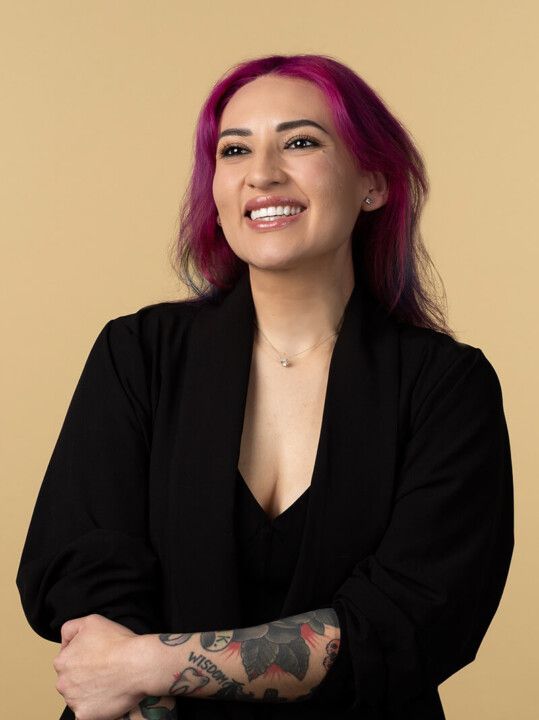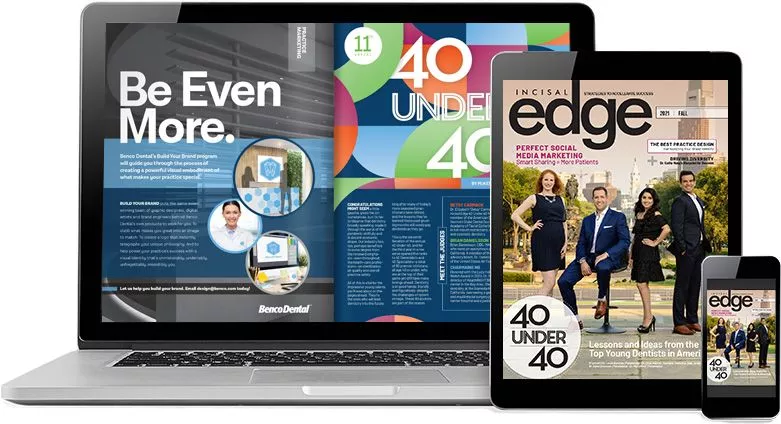A chance encounter with a trash-compacting celluloid robot spurred Brittany Cox to learn more about how dental practices can reduce waste and be more eco-friendly overall. Her knowledge has transformed her career—and offers valuable lessons for green-minded doctors everywhere.

Brittany Cox, RDH
Hygienist of the Year
Director of Hygiene
Vida Dental, Austin, TX
CHILDREN OFTEN ASK the most insightful questions—their innate curiosity contagious, they invite adults to see the world in a new light. One such moment came to Brittany Cox, a 29-year-old Austinite, while watching WALL-E with her two children several years ago. The 2008 Disney animated film, set in a twenty-ninth-century trash-covered Earth, prompted difficult questions. Was this dystopia more fiction or prediction?
“I found myself struggling to explain that while it wasn’t our reality, it could be if we didn’t start making changes,” Cox says. “I didn’t have all the answers, so I started doing research on how we could live more sustainably at home. Their curiosity made me stop and think about how we were living and the example I was setting. That research quickly turned into action, and we began making small but meaningful changes in our everyday lives.”
Incisal Edge is proud to feature our Hygienist of the Year in our annual 32 Most Influential People in Dentistry issue. As patient-facing as anyone in a practice, hygienists exert great influence, and we’re thrilled to honor them.
A Texas native known for adding bright pops of color to her naturally dark hair, Cox began her career in dental hygiene in 2015. She used pandemic downtime in 2020 to complete a bachelor’s degree in oral health promotion and, that June, began working for Vida Dental, an Austin practice for which she’s now director of hygiene.
Last year, she graduated with a master’s in the same discipline from O’Hehir University; it was through this online program that her passion for sustainability expanded beyond her personal life and became a cornerstone of her professional mission. The O’Hehir master’s aims to empower practicing oral health professionals by equipping them with writing, speaking and teaching skills. “One of our projects was to create an initiative to promote oral health, and I decided to dive into sustainability within the dental industry. What I learned was eye-opening. That project sparked a commitment to not only make changes in my practice but also to drive larger conversations within the industry,” Cox says.
She started by altering a few things at Vida Dental’s three Austin-area locations. “Our team started with a few simple but [meaningful] changes, including creating early-intervention perio protocols, implementing caries risk assessments and transitioning to digital forms.” The practice also audited its inventory, updated procurement processes and restructured operations to make better use of its in-office lab—reducing travel emissions—and implemented improved waste-management systems.
In her daily work, Cox no longer uses prophy cups, preferring instead to buy prophy paste in bulk and squeeze a small amount on the dorsum of her gloved hand. She has also introduced techniques like Guided Biofilm Therapy and Airflow technology that reduce plastic waste, started an office recycling program and decreased her reliance on single-use plastics and sourcing biodegradable and recyclable materials.
That’s all good for the planet—and for business. “These changes not only help reduce our environmental impact but contribute to creating a strong brand identity,” she says. “Patients really appreciate the higher quality of care they receive, and many value the fact that we’re committed to prevention and sustainability.”
Patients really appreciate the higher quality of care they receive, and many value the fact that we’re committed to prevention and sustainability.”

“My advice to hygienists who want to make their practices greener is to start small,” she says. “I introduce practical sustainability techniques tailored to their needs. My strategies include implementing comprehensive waste reduction programs, optimizing inventory management to decrease excess consumption, and using environmentally friendly sterilization methods.”
Incisal Edge readers are all too aware that dental offices employ a welter of single-use materials—from personal protective equipment such as gloves and masks to disposable patient-care accoutrements like bibs, syringe tips and prophy cups—that amount to uncountable tons of nonrecyclable waste every year. “One of the biggest challenges is balancing infection control with sustainability,” Cox says. “A lot of dental products are single-use to keep patients safe, but that also means tons of waste. On top of that, many dental offices stick to what they know.”
Likewise, practices don’t dispose of just plastic, cotton and latex—which can take centuries to decompose—but also metals like mercury, silver and tin that are found in dental amalgam.
That’s where prevention-focused care comes in. Educating patients, dentists and other health care professionals about the importance of preventive care is one of the most meaningful aspects of Cox’s advocacy. “When people think of eco-friendly dentistry, they still think of bamboo toothbrushes and biodegradable floss picks.
Of course that’s part of it, but it’s not everything,” she says. “By focusing on early intervention and preventive treatments for patients, you reduce the need for more resource-intensive procedures, which then helps you cut down on waste and energy use.”
Cox promotes hygiene and hygienists and organizes outreach initiatives locally as president of the Greater Austin Dental Hygienists’ Association, a position she has held since 2024. A big hurdle, she says, is the professional limitations hygienists face. She’s involved with the Texas Dental Hygienists’ Association House of Delegates’ legislative initiatives, working to broaden the scope of practice for hygienists in the Lone Star State, and serves on the governing council of the American Academy of Dental Hygiene. “Scope of practice varies greatly from state to state, which makes it difficult to implement standardized solutions or create widespread change,” she says.
Expanding hygienists’ practice scope “would address several critical issues, such as improving workflow, increasing access to care and tackling oral health disparities,” she adds. “Empowering hygienists with more responsibility would not only enhance sustainability by streamlining operations but also create more opportunities for us to make a real impact on patient care and public health.”
In her career, she’s proudest so far of the like-minded community she has built. “Through speaking, social media and collaborations, I’ve been able to create a space where we can all learn from each other, share ideas and motivate each other to push for positive change,” she says. “That sense of community is something I really value, and it keeps me going every day.”
Lean And Green
Brittany Cox’s top sustainability tips.
- Focus on prevention. You reduce the need for resource-heavy procedures, which means less waste, water and energy use.
- Switch to digital records, consent forms and X-rays to cut down on paper waste and reduce chemical use from traditional imaging.
- Be mindful of inventory. Over-ordering leads to expired products and unnecessary waste.
- Try to find eco-friendly disposables. Where
single-use is unavoidable, choose biodegradable or recyclable alternatives. - Try to reduce energy consumption. Upgrade to energy-efficient equipment, LED lighting and use timers for devices. Or just turn off the light in rooms—the bathroom, the break room—when they’re not in use.
- Work with manufacturers that prioritize sustainable materials and eco-conscious production methods. Support them—you’ll be surprised how cost-effective it can be to make the switch.




